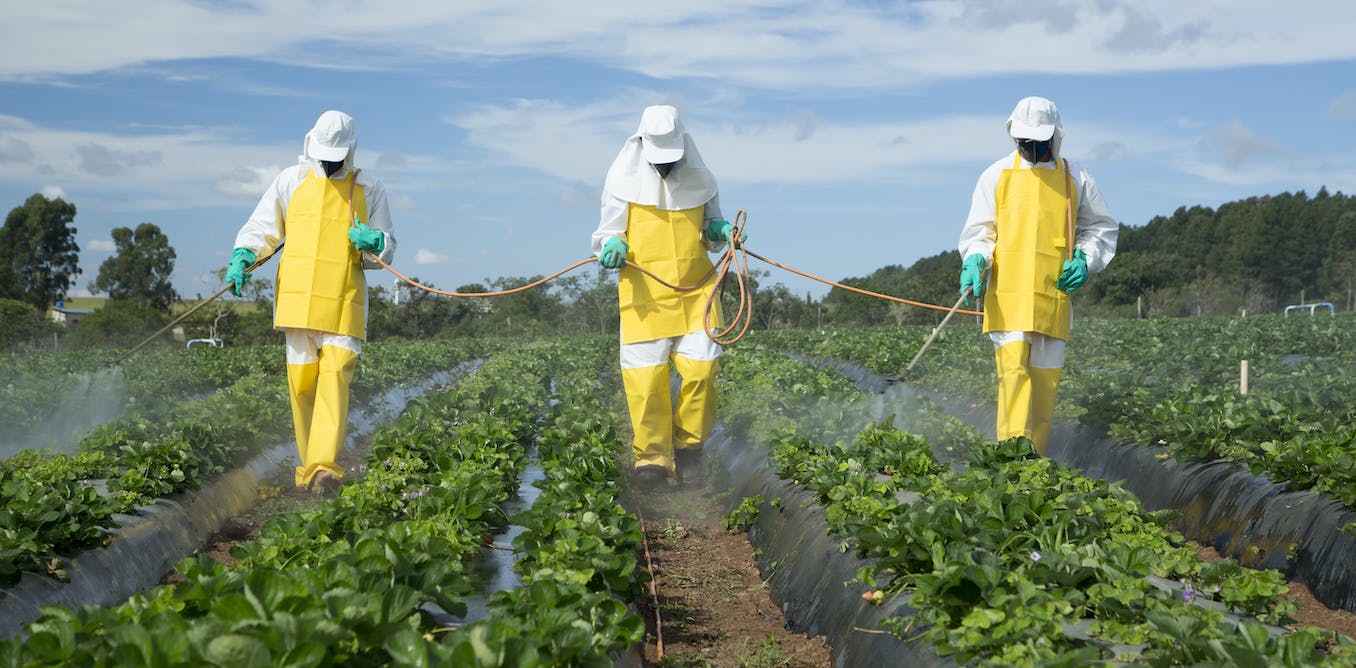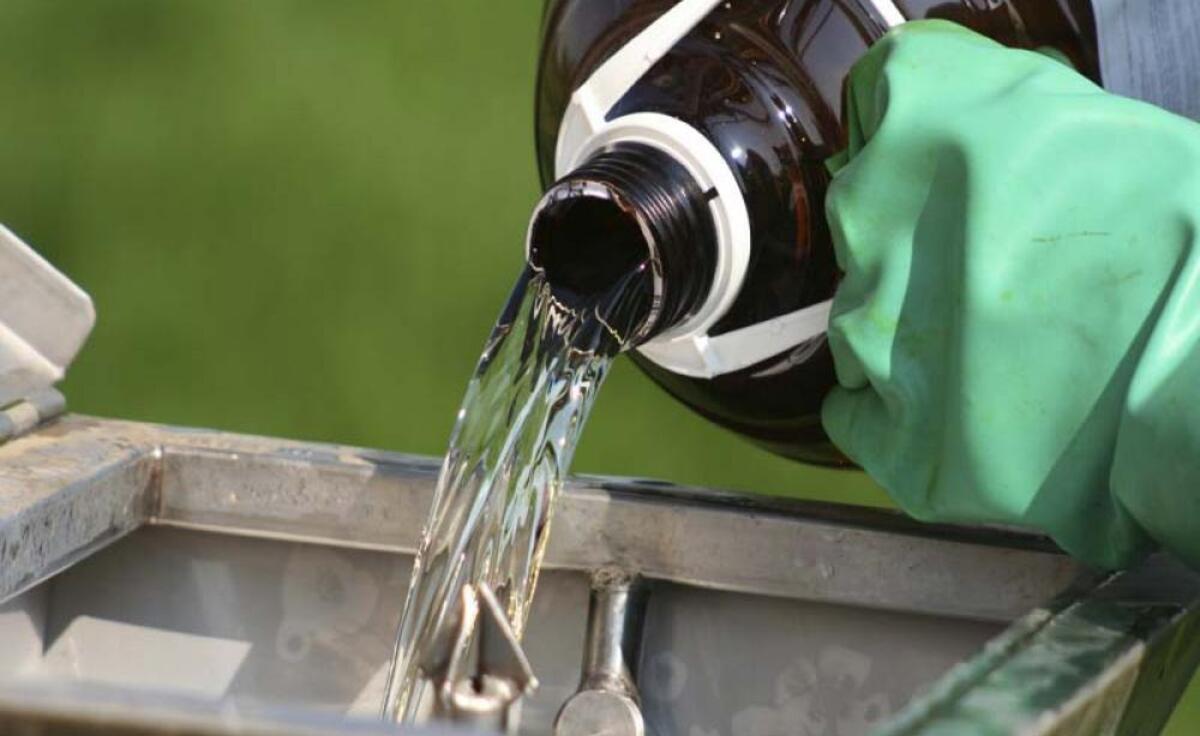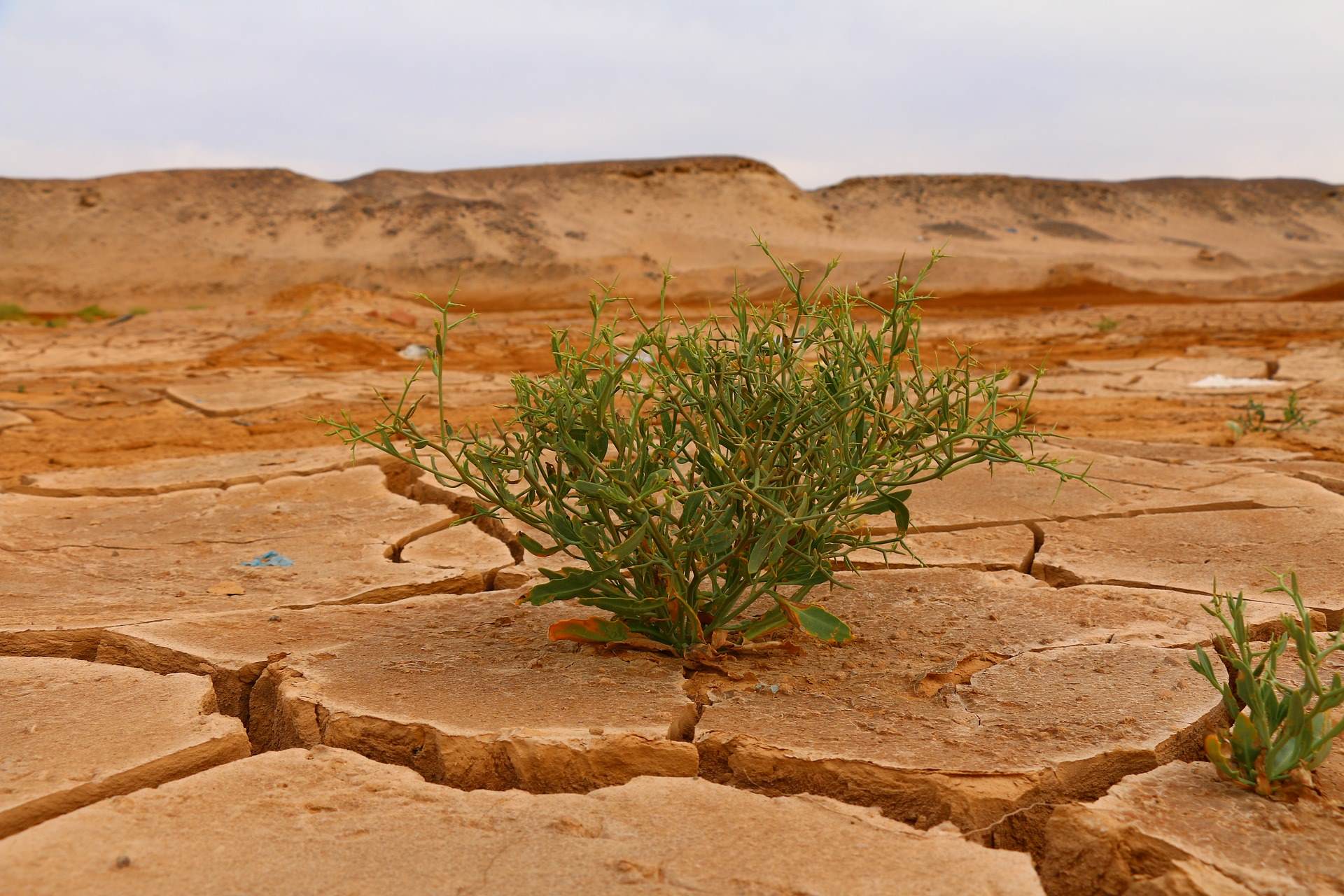Home>Gardening News and Trends>Latest News>Explain How Flooding Rice Fields Reduces The Need For Herbicides And Pesticides In Rice Farming


Latest News
Explain How Flooding Rice Fields Reduces The Need For Herbicides And Pesticides In Rice Farming
Modified: January 22, 2024
Discover the latest news on how flooding rice fields can effectively reduce the reliance on herbicides and pesticides in rice farming, promoting sustainable and eco-friendly practices.
(Many of the links in this article redirect to a specific reviewed product. Your purchase of these products through affiliate links helps to generate commission for Chicagolandgardening.com, at no extra cost. Learn more)
Table of Contents
- Introduction
- The Role of Herbicides and Pesticides in Rice Farming
- The Impact of Flooding Rice Fields on Weed Control
- Mechanisms Behind Flooding Rice Fields and Pesticide Reduction
- Implications of Reduced Herbicide and Pesticide Use
- Challenges and Limitations of Flooding Rice Fields in Pest Management
- Conclusion
Introduction
Rice is one of the most important staple crops in the world, providing sustenance for millions of people. However, rice farming often relies heavily on the use of herbicides and pesticides to control weeds and pests that threaten crop productivity. While these synthetic chemicals have been effective in managing agricultural pests, they also raise concerns about environmental pollution, human health risks, and the development of pesticide-resistant organisms.
In recent years, a sustainable and eco-friendly approach to rice farming has gained attention – flooding rice fields. This traditional farming method involves intentionally submerging the rice fields with water to prevent weed growth and reduce the need for herbicides and pesticides. Flooding rice fields not only helps control weeds but also has several other advantages, such as enhancing soil fertility, reducing fertilizer requirements, and preventing the spread of diseases. In this article, we will explore how flooding rice fields reduces the need for herbicides and pesticides, the mechanisms behind this phenomenon, and the implications for rice farming.
The Role of Herbicides and Pesticides in Rice Farming
Herbicides and pesticides play a vital role in rice farming by controlling weeds and pests that can significantly reduce crop yield. Weeds compete with rice plants for nutrients, sunlight, and water, leading to stunted growth and lower productivity. Additionally, pests such as insects, rodents, pathogens, and diseases can cause significant damage to rice crops if left unchecked.
Modern agriculture heavily relies on synthetic herbicides and pesticides to combat these challenges. Herbicides target and kill unwanted weeds, while pesticides protect rice plants against various pests. These chemical interventions have enabled farmers to increase crop yield and meet the ever-growing demand for rice.
However, the excessive use of herbicides and pesticides has raised concerns about the negative impact on the environment and human health. Runoff from treated fields can contaminate water bodies, leading to the destruction of aquatic ecosystems. Pesticide residues on rice grains can also pose health risks to consumers if not properly managed.
Given these challenges, there is a growing need to explore alternative and sustainable approaches to rice farming. Flooding rice fields has emerged as a promising method that can reduce the reliance on herbicides and pesticides while maintaining crop productivity.
The Impact of Flooding Rice Fields on Weed Control
Flooding rice fields is an ancient farming practice that has proven to be effective in controlling weeds without the need for excessive herbicide use. When rice fields are submerged with water, it creates an anaerobic environment that deprives weed seeds of oxygen, hindering their germination and growth. Additionally, the flooded conditions make it difficult for weed seedlings to establish themselves, as they struggle to compete for light and nutrients.
By submerging the fields, farmers can effectively suppress the growth and spread of weeds, ultimately reducing the need for herbicides. Studies have shown that flooding rice fields can reduce the weed population by up to 90%, resulting in significant weed control.
Another benefit of flooding rice fields is that it promotes the growth of rice plants while inhibiting the growth of weeds. Rice plants are adapted to thrive in submerged conditions, as they can elongate their stems to reach above the water surface and capture sunlight. On the other hand, most weed species cannot tolerate continuous flooding and are unable to compete with rice plants under these conditions.
In addition to hindering weed growth, flooding rice fields also aids in the breakdown of organic matter, such as crop residues and decaying plant material. This increased decomposition rate helps reduce the accumulation of weed seeds in the soil, further minimizing the weed pressure in subsequent seasons.
Overall, flooding rice fields provides a natural and effective method for weed control in rice farming. By creating an environment that is unfavorable for weed growth, farmers can significantly reduce their reliance on herbicides, minimizing environmental impacts and potential health risks.
Mechanisms Behind Flooding Rice Fields and Pesticide Reduction
The reduction in pesticide use when flooding rice fields can be attributed to several mechanisms that are inherent to this farming practice. Understanding these mechanisms is crucial in implementing sustainable pest management strategies in rice farming.
One of the main mechanisms behind flooding rice fields is the suppression of pests and diseases. Many pests and pathogens that are harmful to rice plants require oxygen for their survival and reproduction. By submerging the fields, the anaerobic conditions created make it challenging for these organisms to thrive. This natural pest control mechanism reduces the need for pesticide applications to combat these pests and diseases.
In addition to suffocating pests, flooding rice fields also acts as a physical barrier that limits the movement of pests into the fields. For example, inundated fields can prevent the ingress of insect pests like the rice stem borer or pests that rely on aerial movement for colonization. This reduces the need for pesticide treatments targeting these specific pests.
Flooding rice fields also alters the habitat and ecological balance, favoring beneficial organisms that act as natural enemies of pests. The presence of water creates an environment that is conducive to the proliferation of organisms such as predatory insects, aquatic insects, and beneficial microorganisms. These natural enemies play a significant role in pest control by preying on pests or disrupting their life cycles, reducing the need for pesticide interventions.
Furthermore, the physical presence of water on the surface of flooded rice fields makes it challenging for weeds to grow and spread. This effectively reduces competition between rice plants and weeds, minimizing weed pressure. As a result, farmers can rely less on herbicides to control weed growth, reducing pesticide use overall.
Overall, the mechanisms behind flooding rice fields, such as pest suffocation, physical barriers, promotion of beneficial organisms, and weed suppression, contribute to a significant reduction in pesticide use. By harnessing these natural mechanisms, farmers can adopt sustainable and environmentally friendly approaches to pest management in rice farming.
Implications of Reduced Herbicide and Pesticide Use
The reduction in herbicide and pesticide use through the practice of flooding rice fields has far-reaching implications for both the environment and human health.
One of the most significant implications is the positive impact on the environment. By decreasing the reliance on synthetic chemicals, the risk of water contamination from pesticide runoff is reduced. Pesticides can have detrimental effects on aquatic ecosystems and non-target organisms. Less pesticide runoff means a healthier and more balanced aquatic environment, preserving biodiversity and ecosystem integrity.
The practice of flooding rice fields also contributes to improved soil health and fertility. The continuous flooding helps to maintain moisture levels in the soil, promoting organic matter decomposition and nutrient cycling. This results in better soil structure, increased nutrient availability, and enhanced soil fertility. As a result, farmers can potentially reduce their fertilizer usage, minimizing the environmental impact associated with fertilizers.
Furthermore, the reduced use of herbicides and pesticides in rice farming can have positive effects on human health. Pesticide residues present on food crops can pose health risks to consumers when consumed over long periods. By minimizing pesticide use, the potential exposure to pesticide residues is decreased, contributing to safer food consumption and reducing health risks.
Additionally, farmers and agricultural workers benefit from reduced herbicide and pesticide use. Direct exposure to these chemicals during application and handling can pose risks to their health. By adopting the practice of flooding rice fields, farmers can minimize their exposure to potentially harmful chemicals, promoting safer working conditions.
Moreover, the practice of reducing herbicide and pesticide use aligns with sustainable agriculture goals. It promotes the use of natural and ecological approaches to pest management, emphasizing the importance of biodiversity, ecological balance, and long-term sustainability. Implementing such practices contributes to the overall resilience and sustainability of the rice farming system.
Overall, the implications of reducing herbicide and pesticide use in rice farming through the practice of flooding rice fields are wide-ranging, benefiting the environment, human health, and the sustainability of agricultural systems. By adopting these sustainable practices, farmers can contribute to a healthier and more sustainable future for rice farming worldwide.
Challenges and Limitations of Flooding Rice Fields in Pest Management
While flooding rice fields offers numerous benefits in terms of reducing the need for herbicides and pesticides, there are also several challenges and limitations associated with this practice.
One of the primary challenges is the availability and management of water resources. Flooding rice fields requires a significant amount of water, which can be a limitation in regions with limited water availability or unreliable irrigation systems. In areas prone to drought or water scarcity, maintaining flooded conditions throughout the growing season may be challenging, leading to difficulties in implementing this method consistently.
Another challenge lies in the management of specific pests that are adapted to flooded conditions. While flooding rice fields can suppress many pests, there are certain pests, such as aquatic insects, rats, and diseases that have adapted to thrive in submerged environments. These pests can still pose significant challenges and may require alternative management strategies to control effectively.
In some cases, flooding rice fields can result in decreased rice yield due to factors such as nutrient deficiency or the development of specific diseases that thrive under submerged conditions. This trade-off between weed control and potential yield reduction needs to be carefully managed and balanced to ensure overall crop productivity.
Additionally, the practice of flooding rice fields requires careful monitoring and timing. Flooding too early or too late in the season can have adverse effects on weed control and pest management. Proper water management and effective timing are crucial in maximizing the benefits of flooding while minimizing potential drawbacks.
Furthermore, the adoption of flooding rice fields may require adjustments in farming practices and infrastructure. Traditional irrigation methods and farming equipment may need to be modified or upgraded to accommodate flooded conditions. Farmers may also need to adapt their crop rotation and cultivation practices to optimize the benefits of this method.
Lastly, it is essential to acknowledge that flooding rice fields may not be suitable for all rice farming systems or areas. Factors such as soil type, climate, and pest pressure can influence the efficacy and feasibility of implementing this practice. Local conditions and resources need to be carefully considered when determining the suitability and potential limitations of flooding rice fields in pest management.
Despite these challenges and limitations, the practice of flooding rice fields remains a valuable and sustainable approach in reducing herbicide and pesticide use. With proper management and adaptation to local conditions, farmers can overcome these challenges and reap the benefits of this eco-friendly method in rice farming.
Conclusion
The practice of flooding rice fields provides a sustainable and eco-friendly method for reducing the need for herbicides and pesticides in rice farming. By intentionally submerging the fields, farmers can effectively control weeds and pests while minimizing the environmental and health risks associated with synthetic chemicals.
Flooding rice fields offers several advantages beyond reducing the use of herbicides and pesticides. It enhances soil fertility, reduces fertilizer requirements, prevents the spread of diseases, and promotes the growth of rice plants while inhibiting weed growth.
The mechanisms behind flooding rice fields, such as pest suffocation, physical barriers, promotion of beneficial organisms, and weed suppression, contribute to such reductions. By leveraging these natural mechanisms, farmers can adopt sustainable pest management strategies while maintaining crop productivity.
However, there are challenges and limitations associated with flooding rice fields. These include water availability, management of specific pest adaptability, potential yield reduction, careful monitoring and timing, necessary farming practice adjustments, and suitability based on local conditions. These factors need to be considered and addressed to ensure successful implementation.
In conclusion, the practice of flooding rice fields is a promising approach for reducing the reliance on herbicides and pesticides in rice farming. With proper management and adaptation, farmers can minimize environmental pollution, protect human health, and contribute to the long-term sustainability of rice farming. By implementing this sustainable and environmentally friendly method, we can move towards a more resilient and ecologically balanced agricultural system, benefiting both farmers and the wider ecosystem.






